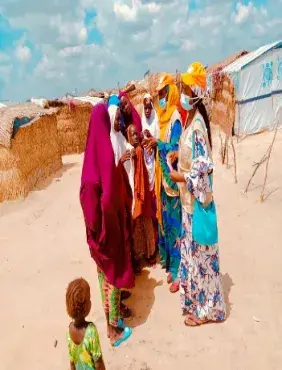United Nations Population Fund Country programme document for Nigeria
Programme rationale:
1. The estimated population of Nigeria of 216 million1 and its annual growth rate of 3.2 percent is driven by a total fertility rate of 5.3. This rate is higher among rural households (5.9) and uneducated and poorest households (6.7). The population is expected to reach 400 million by 2050, making Nigeria the third most populous country globally. Women of childbearing age make up 24.8 percent of the population and young people (aged 10-24 years) account for 31.7 percent. Sixty-three percent of the population is under 25 years old and 49.3 percent is female.
2. Nigeria faces complex humanitarian and public health emergencies. These include protracted armed conflicts in the northeast, banditry in the northwest, refugees in the south-south and north-central zones, and flash floods nationwide. Climate change has increased deforestation and the drying of water bodies and crop failure, thereby heightening the humanitarian situation and negatively impacting women and girls’ access to sexual and reproductive health. This situation is compounded by pervasive social norms that affect women’s and girls’ health-seeking behavior and bodily autonomy.
3. About 95.1 million people, 42 percent, are at risk of being left behind due to the high rate of poverty in a country with a Gini index of 35, a human development index of 0.35, and a gender equality index of 0.33. The COVID-19 pandemic and the global crisis have impacted the national economy and healthcare system. More than half of the rural population (52.1 percent) live below the national poverty line, compared with 18 percent of the urban population. The rural population is vulnerable to paying out-of-pocket health and education expenditures. Therefore, progress towards the Sustainable Development Goals (hereafter, the Goals) requires more investments and accelerated efforts to reach women, adolescent girls, and young people. The country has been a democracy for 22 years; recently, there have been agitations, protests, and strikes due to socioeconomic inequalities. To mitigate them, the Government has initiated social protection schemes and policy reforms across all sectors. However, these schemes and reforms have not been adequately financed, and the health allocation in the federal budget stands at a low of 4.3 percent


